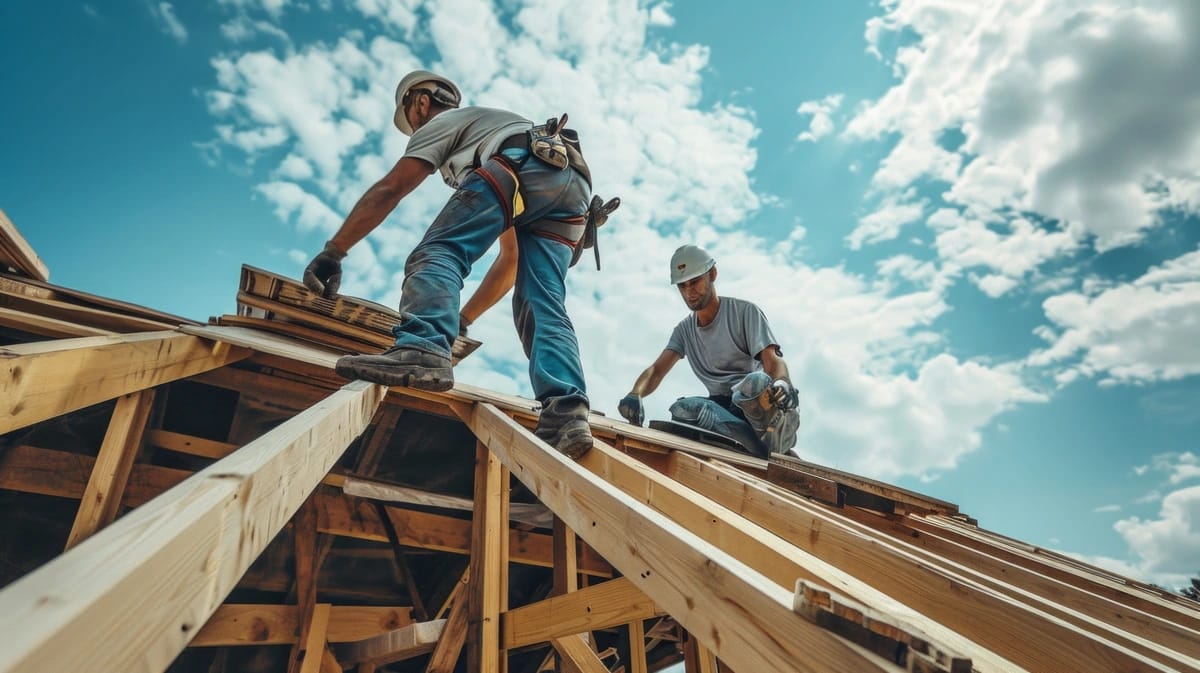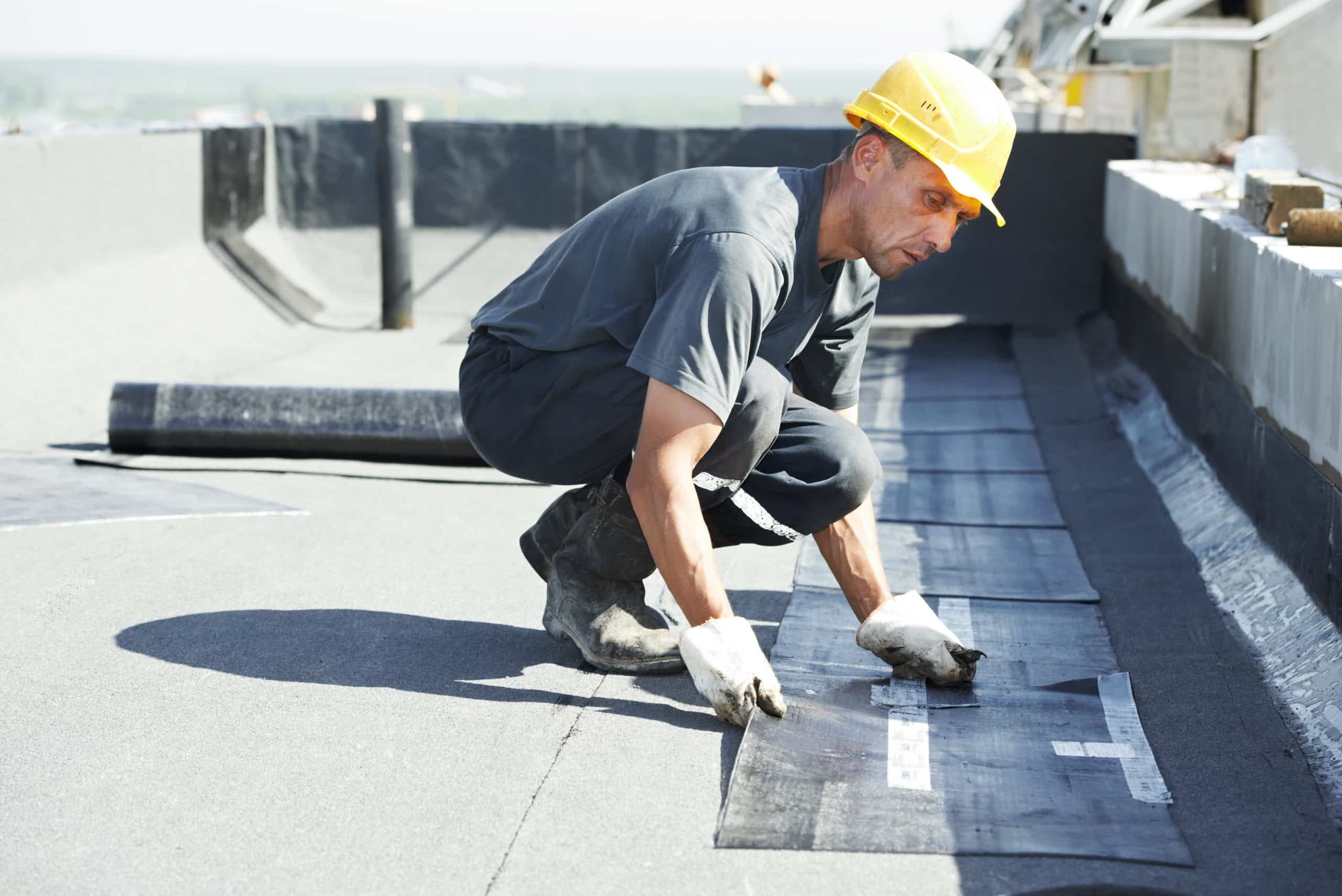Checking Out the Various Kinds Of Roof Coverings: Which One Is Finest for Your Home?
When considering the myriad types of roofing systems offered, it is vital to review just how each choice lines up with your home's special needs, consisting of environment conditions, aesthetic preferences, and structural functionality. From the classic gable roof that effectively networks rain to the modern-day level roofing system offering metropolitan adaptability, each style offers unique advantages and challenges.
Gable Roofing Systems
Saddleback roofs, characterized by their triangular shape and sloping sides, are a preferred selection among property owners seeking both aesthetic appeal and capability. This roofing style efficiently enables reliable water overflow, decreasing the risk of water merging and succeeding damages. Furthermore, the high inclines create enough attic room space, which can be made use of for storage and even transformed into living areas.
Among the main advantages of saddleback roofs is their capacity to stand up to harsh weather. The layout assists in minimizing wind resistance, making them specifically suitable for locations susceptible to tornados. Additionally, gable roof coverings can be constructed utilizing a variety of products, including tiles, tiles, and steel, providing home owners with flexibility in layout and budget.
From a building perspective, gable roof coverings can enhance the aesthetic allure of a home, providing a ageless and traditional look. They can enhance various architectural designs, from traditional to contemporary layouts. However, it is necessary to take into consideration potential downsides, such as the susceptibility to snow build-up in chillier environments. Overall, gable roofings continue to be a popular option because of their equilibrium of usefulness and design, appealing to a vast array of home owners.
Flat Roofs
While typically ignored in favor of more conventional roofing system styles, flat roofing systems use special advantages that deal with particular architectural needs and modern-day layout choices. These roofings are defined by their very little pitch, enabling for efficient use room, specifically in metropolitan atmospheres where making best use of square video is necessary.
One substantial advantage of flat roofing systems is their flexibility. They can be utilized as added home, such as rooftop yards, outdoor patios, or solar panel installments, improving the performance of a home. Moreover, level roofings are generally easier and more secure to navigate throughout maintenance, facilitating fixings and examinations without the obstacles postured by steep inclines.
Flat roof coverings can likewise be more cost-efficient in terms of products and installation. With a less complex design, they usually need less resources, converting into reduced labor prices. Nevertheless, it's vital to consider drain and waterproofing, as level roofing systems can be vulnerable to pooling water otherwise properly created.

Hip Roofing Systems
Hip roof coverings stand out for their sophisticated layout and architectural integrity, making them a prominent option amongst property owners. Defined by inclines on all 4 sides, hip roofs provide a well-balanced aesthetic that complements various architectural styles - roof repair oahu. The in proportion nature of these roofing systems helps to distribute weight evenly, improving stability and longevity
Among the vital benefits of hip roofs is their ability to endure severe weather condition conditions. The sloped surfaces help with efficient water drainage and snow runoff, decreasing the risk of leaks and structural damages. In addition, the layout decreases wind resistance, making hip roof coverings much less susceptible to wind uplift contrasted to various other roof covering kinds.


Shed Roofs
Dropped roofing systems, unlike the complexity of hip roof coverings, use a streamlined and minimal layout that attract modern-day appearances. Identified by a single sloping surface area, shed roofings are frequently made use of in contemporary design, garden sheds, and internet other useful structures. This simplicity not just enhances aesthetic charm yet also permits reliable water overflow, making them ideal for various climates.
One of the main benefits of shed roofing systems is their cost-effectiveness. With less products called for and a straightforward installation process, house owners can conserve both time and cash. The design also permits the incorporation of large windows or skylights, promoting natural light and creating roomy interiors.
Nevertheless, it is necessary to take into consideration the possible downsides, consisting of minimal insulation alternatives and the demand for mindful style to prevent excessive warmth accumulation. Additionally, lost roofings may not mix flawlessly with typical style, which can be a worry for some house owners.
Eventually, lost roof coverings offer a elegant and useful roofing solution for those looking for modernity and performance. When choosing a roofing system type, reviewing individual aesthetic preferences and functional needs will guide homeowners to the very best option for their distinct demands.
Mansard Roofings
Mansard roofing systems, characterized by their distinct four-sided design, are a characteristic of French design that combines style with performance. This architectural design features 2 slopes on each side, with the reduced slope being steeper than the top one. The distinct arrangement enables additional space in the top levels, making it an excellent selection for house owners seeking to maximize functional area without broadening the structure's footprint.
Among the significant advantages of a mansard roof covering is its flexibility. It can be adapted to different building styles, from standard to modern, improving the visual appeal description of any type of home. In addition, the ample area developed under the roofing system can quickly suit dormer windows, which permit all-natural light and air flow, further improving the convenience of the living location.
Nonetheless, possible homeowners should consider the upkeep demands connected with mansard roof coverings. Setup costs may be higher contrasted to less complex roof covering layouts due to the intricacy of building.
Final Thought
Each roof design provides one-of-a-kind advantages, such as the performance of gable roofing read the full info here systems, the contemporary allure of shed roofing systems, and the security of hip roofing systems. Level roofing systems use practicality for metropolitan settings, while mansard roofing systems give additional living area regardless of higher setup prices.
From the classic gable roof covering that efficiently channels rainwater to the modern-day level roof offering urban versatility, each design presents unique benefits and obstacles (roof repair oahu). Additionally, the style lessens wind resistance, making hip roofing systems much less susceptible to wind uplift compared to other roof covering types
Shed roofings, in contrast to the complexity of hip roofing systems, supply a structured and minimalist style that appeals to modern looks. Each roof covering style provides unique benefits, such as the performance of gable roofings, the modern charm of shed roofings, and the stability of hip roofing systems. Flat roofing systems use functionality for metropolitan atmospheres, while mansard roofings supply extra living area in spite of higher setup costs.